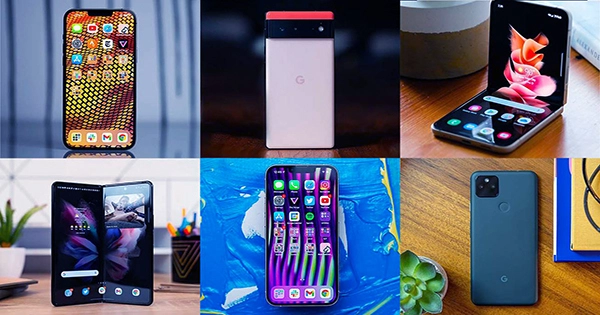Smartphone shipments have already started to decline ahead of 2020, despite the fact those two years of a pandemic and the related supply chain and chip constraints did not assist the overall stats. However, according to statistics from Counterpoint Research and IDC, the market finally grew last year for the first time since 2017. According to Counterpoint, overall year-over-year growth is expected to be 4%, with IDC forecasting 5.7 percent. Both organizations, however, predict a drop in Q4, with declines of 6% and 3.2 percent, respectively.
Of course, the drop is too expected, given ongoing chip shortages, which have had a disproportionately large impact on smaller manufacturers with less supply chain power than Apple and Samsung. With a 6% gain, both corporations put Samsung at the top of the year’s rankings, with Apple in second place. The firms also agree with a recent Canalys report that Apple won the quarter. Apple’s great quarterly profits announcement, powered in no small part by the iPhone’s success, reaffirmed those thoughts.

The company’s iPhone division had a 9% increase in sales year over year, to $71.63 billion. On a conference call, CEO Tim Cook agreed that supply chain constraints remained a challenge for the company, with demand outstripping supply in some markets, but added that he expects concerns lightening in the future. Such concerns eventually speak to a market that would have recovered more quickly if it had not been for them. “The fact that 2021 would have come in much higher if supply limitations had not existed adds even more positivity to the healthy 5.7 percent increase we saw for 2021,” IDC research director Nabila Popal said in a statement.
“It sends a message to me that there is substantial unmet demand in practically every location.” Even in China, where there are certain issues due to falling consumer demand, the market did significantly better than projected in the fourth quarter, by 5% to be exact, despite a year-over-year decline.” While supply chain restrictions continue to be a major issue in China, the No. 2 and No. 3 smartphone markets grew in 2021.
“Demand for Apple’s first 5G-enabled iPhone 12 series sawp through to the first quarter of 2021, demand that remained throughout the year, concluding on a strong Q4 courtesy to Black Friday and holiday season promotions,” said Harmeet Singh Walia, a Counterpoint analyst. “Higher replacement rates, improved availability, and more appealing financing options in mid-to high-tier phones helped India have a strong year as well.” Due to sluggish upgrade cycles, high prices, and market saturation, demand began to fall prior to the pandemic after nearly a decade of rapid growth. The slowdown was exacerbated by COVID-19, which caused customers to be less ready to spend. Supply chain concerns compounded the problem, while pent-up demand and innovations like 5G have reignited interest, albeit overall exports are still well below pre-pandemic levels.















